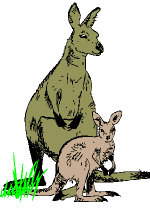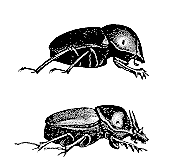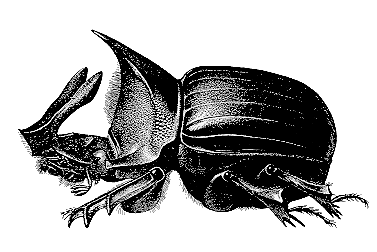Dung Beetles to the Rescue

To European settlers in the late 1780’s, the Australian “outback” looked like an ideal place to raise cattle. The climate was mild, the grass was green, and above all there was plenty of room for animals to roam. But at that time, there were no cattle living in Australia. Due to its long geological isolation from the rest of the world, Australia was the only continent, besides Antarctica, where there were no native species of ungulates (hooved animals such as cattle, deer, pigs, sheep, camels, llamas, giraffes, horses, zebras, and elephants). As a result of this isolation, Australia developed a unique mammalian fauna in which kangaroos and other marsupials filled ecological niches that were occupied by ungulates on other continents of the world.
But things began to change in January, 1788, when English colonists arrived in Australia with their first cargo of livestock: five cows, two bulls, seven horses, and 44 sheep. Over the next 200 years, populations of humans and domestic animals grew and prospered. By the mid 1960’s, the continent supported nearly 30 million head of beef and dairy cattle. But by then it had also become apparent that all these animals were having an undesirable effect on the Australian landscape. Fresh manure, over 300,000 metric tons a day, served as a breeding ground for noxious fly populations. After the manure dried into hard “cow pies” it changed very little, accumulating from year to year and decreasing effective rangelands by more than two million hectares each year. The manure also reduced pasture quality by stimulating the growth of noxious weeds that were unsuitable as forage for grazing animals.

Research conducted in the early 1960’s revealed that “tumble-bugs” (dung beetles in the family Scarabaeidae) were at the bottom of the manure problem. All of the native Australian dung beetles were especially adapted for small, relatively dry fecal pellets produced by marsupials. Since ungulates had never been part of the Australian ecology, there were no native decomposers available to process their feces. The imbalance was not noticable as long as cattle herds were small and scattered, but the ecological impact of domestic cattle grew exponentially as herds expanded in size and range. Obviously, something had to be done before the “outback” was awash in a sea of manure.

A solution to the manure problem was found in East Africa where large herds of wildebeests and antelope had roamed the grasslands for millions of years. Here, beginning in 1967, entomologists collected species of “tumble-bugs” that were expressly adapted for ungulate dung. These decomposers were carefully reared to exclude parasites and pathogens, then shipped to Australia where they were released on active rangelands. The beetles quickly became established in their new homeland and produced dramatic improvements in manure recycling, breaking up and dispersing fresh manure in as little as 48 hours! The beetles’ speedy assimilation of cattle dung also resulted in a welcome decline in noxious fly populations. Today, thanks to these imported beetles, there is a new ecological balance between Australia’s cattle industry and the grasslands that support it.

